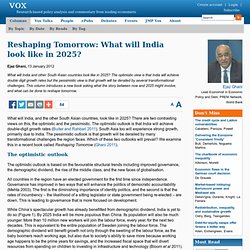

Capitalism: A Ghost Story. Is it a house or a home?

A temple to the new India, or a warehouse for its ghosts? Ever since Antilla arrived on Altamont Road in Mumbai, exuding mystery and quiet menace, things have not been the same. “Here we are,” the friend who took me there said, “Pay your respects to our new Ruler.” Antilla belongs to India’s richest man, Mukesh Ambani.
I had read about this most expensive dwelling ever built, the twenty-seven floors, three helipads, nine lifts, hanging gardens, ballrooms, weather rooms, gymnasiums, six floors of parking, and the six hundred servants. But Gush-Up certainly has. The word on the street (and in the New York Times) is, or at least was, that after all that effort and gardening, the Ambanis don’t live in Antilla. Mukesh Ambani is personally worth $20 billion. RIL is one of a handful of corporations that run India.
According to the rules of the Gush-Up Gospel, the more you have, the more you can have. A whole spectrum of corruption A. But the Litfest gave us our Aha! Reforms Needed For India to Reach Potential of Double Digit GDP Growth. Baker Institute - Limits of the Jugaad Growth Model: No Workaround to Good Governance for India (12 pages) Indian industry has gained fame in management circles for jugaad, or persevering despite limited resources.

This skill has proven particularly important in overcoming inadequate public services. However, the economy appears to have reached the limit of using jugaad in the place of good government, suggesting a lower growth trajectory in the absence of a major improvement in political dynamics. India’s economy performed exceedingly well in the past decade, averaging an impressive 7.8% growth across 10 years, even sustaining 5% growth during the peak of the financial crisis. A common refrain holds that growth occurred “despite the government,” requiring India’s celebrated expertise in jugaad, or creative workarounds to poor resources. India already faces peak power shortages of nearly 10%, despite an impressive amount of new generation capacity coming online this year and next.
What will India look like in 2025? What will India, and the other South Asian countries, look like in 2025?

There are two contrasting views on this, the optimistic and the pessimistic. The optimistic outlook is that India will achieve double-digit growth rates (Buiter and Rahbari 2011). South Asia too will experience strong growth, primarily due to India. The pessimistic outlook is that growth will be derailed by many transformational challenges the region faces. Which of these two outlooks will prevail? The optimistic outlook is based on the favourable structural trends including improved governance, the demographic dividend, the rise of the middle class, and the new faces of globalisation. All countries in the region have an elected government for the first time since independence. While China’s spectacular growth has already benefitted from demographic dividend, India is yet to do so (Figure 1). A massive shift towards a middle class society is already in the making.
Figure 1. Table 1. Source: Kharas (2011) Figure 2. India's Great Middle-Class Moment - Nitin Pai - International. After decades on the sidelines, the growing ranks of Middle India are starting to find their voice.

But can the political system respond? Supporters of Anna Hazare celebrate the end of his fast / Reuters NEW DELHI, India -- What should the world make of the remarkable political churning in India this year? People around the world are braving bullets for the right to vote but here we were, turning out in the streets in large numbers, supporting demands made by such self-appointed leaders of civil society as the hunger-striking Anna Hazare for a draconian anti-corruption law. Parallels with an "Arab Spring" in India don't fit, not least because we last did that kind of anti-regime business in August 1942, when Indian nationalists mobilized non-violent protests to get the British to quit India.
India's political churning this year probably heralds a new phase in Indian politics, with the urban middle-class joining the political process. Where does India go from here? Special Report: India's food chain in deep change. Home - India Knowledge@Wharton.